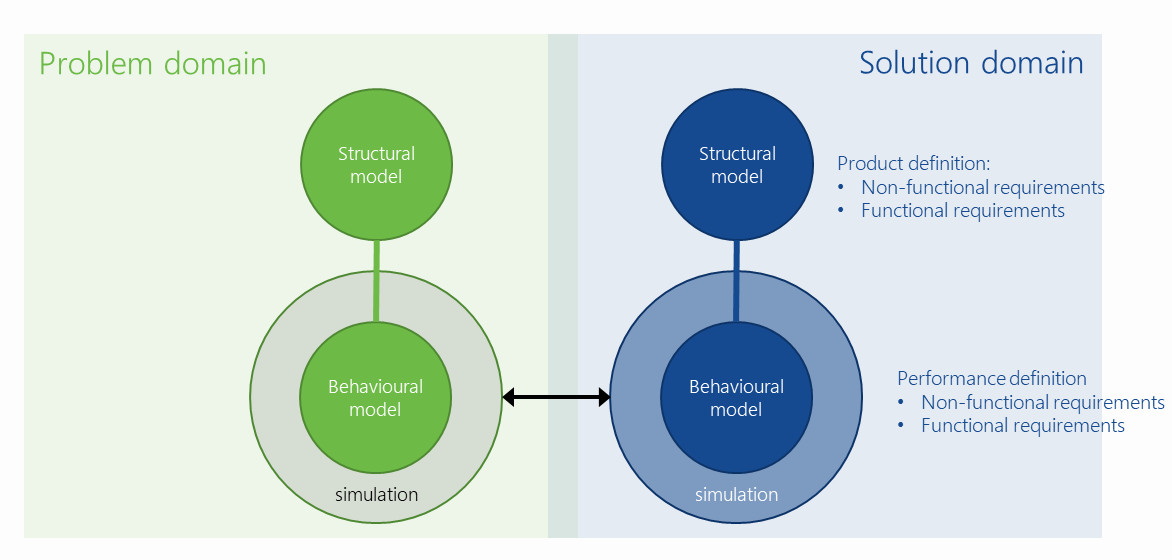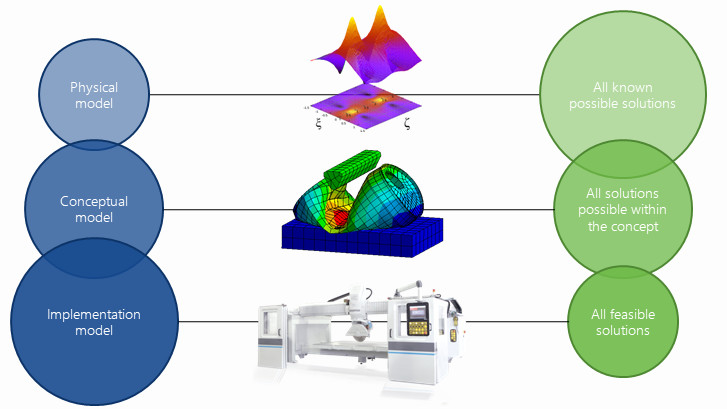your Company’s next Top Model, part II
Last time on ‘your Company’s next Top Model’ I explained how models play a part in Smart Industry 4.0. Even when you’re not aware, they help you digitize your business. Smart models, huh?
In Part II you’ll get introduced to the models, you can have a glimpse on what they look like and learn about their ambitions to make this world a better place! If you’re a manager and think this is all too technical or theoretical for you… better bite the bullet and read on if you want to understand what’s coming your way on the path to digitization and Smart Industry 4.0.
There are two categories: problem domain models and solution domain models (note: ‘problem domain’ and ‘solution domain’ seen from your perspective, meaning your solution might be someone else ‘s problem…).
Within these domains there are two main types of models: structural and behavioural models.
Let’s try this on your company, assuming it provides solutions to fulfil customers needs:
- market segmentation: structural model in problem domain
- customer purchase forecast: behavioural model in problem domain
- organization chart: structural model in solution domain
- resource planning: behavioural model in solution domain
Notice the ‘simulation’ ring around the behavioural model? That’s were things become really interesting. The examples above are all ‘static’. Simulation adds dynamic to the model, making it possible to observe its behaviour, predict it, validate it, compare it with real life events. Predictive algorithms on big data simulate the near future. How do you think the weather forecast is produced? The latest thing is … computers that simulate humans: Artificial Intelligence.
Let’s do another example, on the product this company makes; sheet metal processing equipment.
- sheet metal 3D CAD model: structural model in problem domain
- sheet metal finite element analysis model: behavioural model in problem domain
- sheet metal processing equipment 3D CAD model: structural model in solution domain
- sheet metal processing equipment timing diagram: behavioural model in solution domain
This is, in short, what a ‘Digital Twin’ is made of.
So we have seen structural models and behavioural models, both in the problem domain as well as in the solution domain. On top of that, models have a character as well.
There are
- the elementary physical models: to set the boundaries of what is possible
- the creative conceptual models: to bring you new ideas
- the practical implementation models: to support you in the real world
Example
- Physical model: (P.V)/T = C (ideal gas law)
- Conceptual model: Process Flow Diagram
- Implementation model: 3D Building Information Model
Note that the ‘solution space’, e.g. the number of possible solutions ‘covered’ by the model, decreases as your model becomes more practical. This is due to constraints; limitations that are imposed on them. Where the physical model is only limited by laws of physics, the implementation model takes all requirements, functional and non-functional (the ‘-abilities’), into account.
The shape of things in real life is determined by constraints.
Your company can produce the product it makes in many different ways. But constraints have narrowed down the solution space. Market demands and expectations on quality, delivery time and costs have shaped your company. Aesthetical, economical and technological boundaries shaped the product.
Also note that when models become more practical, they become larger, more complex, more detailed. To a point that they contain, or can produce, sufficient information to close the gap with the real world. It takes quite some effort to reach that level but the benefits will be felt in every day, real life, operation.
You have reached the point were Smart Industry 4.0 really starts off!!
Here lies a challenge: the more practical your company (culture) is, the more complex the needed models are. Do you, your colleagues have the skills to build them?
Watch this space: next time I’ll help you to choose your next Top Model!
If you can’t wait to learn more, just give me a call => ideci





